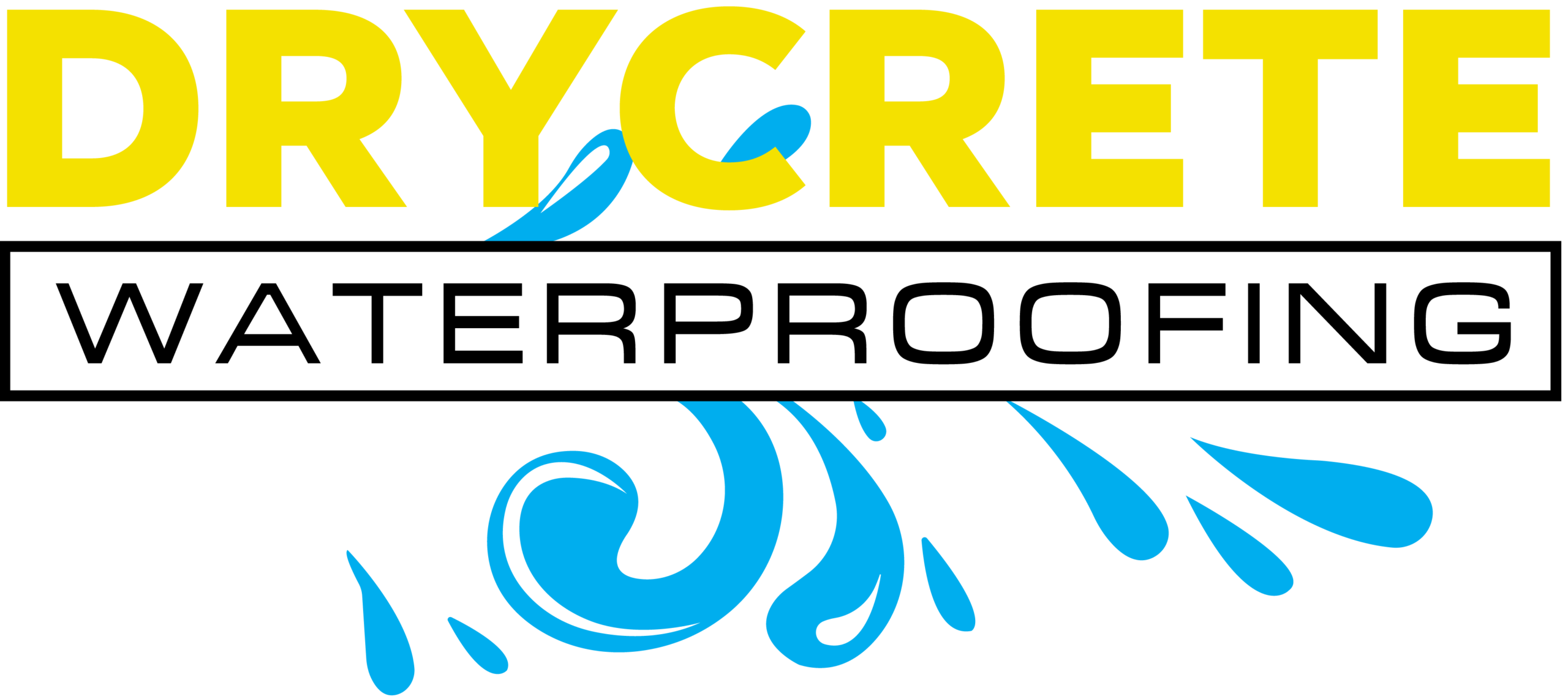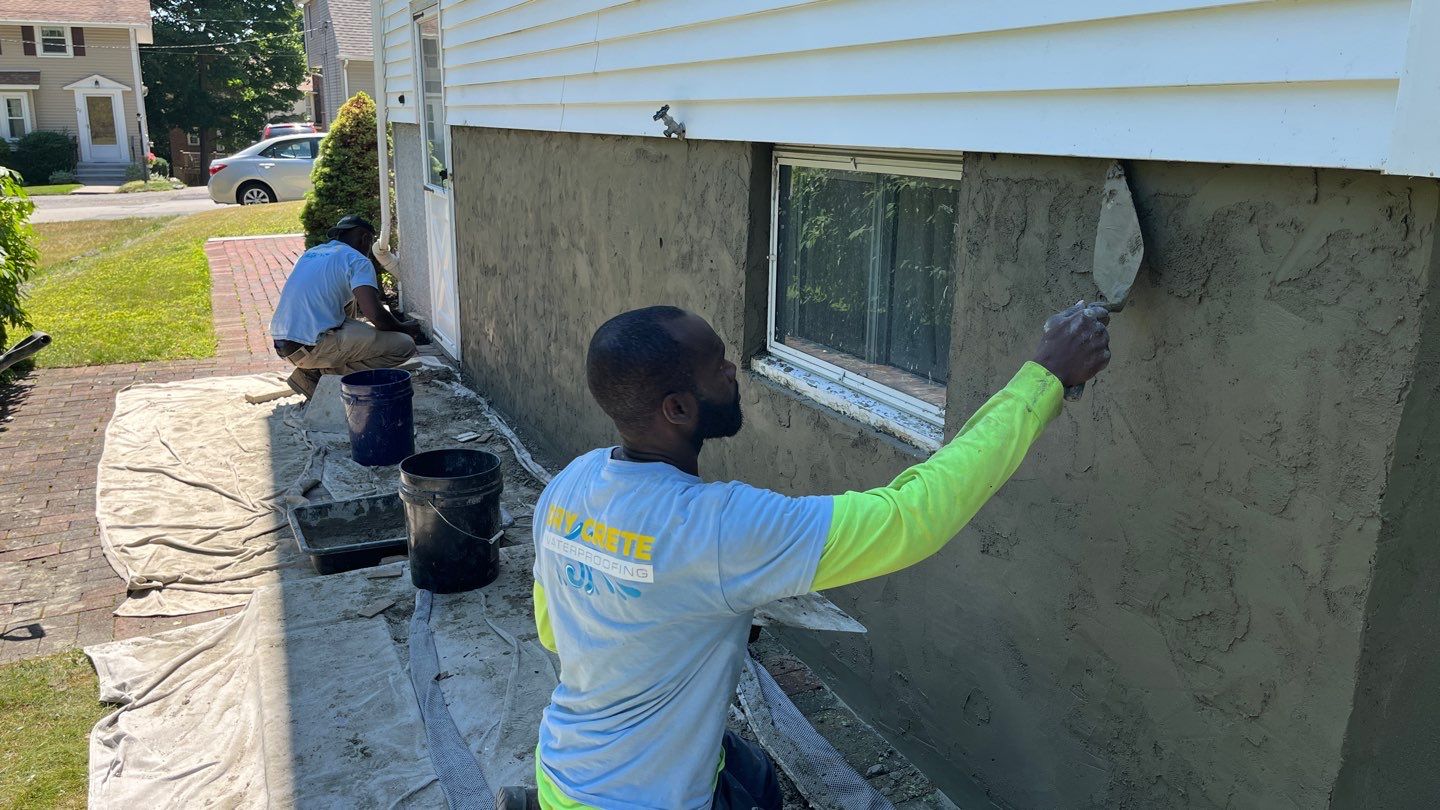When it comes to finishing off your foundation’s exterior walls, you’ve got two options: parging or stucco. On the surface (forgive the pun) they have a lot in common: they’re both extra coats designed to finish, strengthen and waterproof your basement. That being said, they’re not the same thing and while a skim coat or parging might be great for one application, it might not work for another. Likewise, while stucco can offer a fantastic finish, it might not always be worth the expense and effort. There’s a lot of nuance when it comes to choosing between parging vs stucco, so let’s break it down.
What Is Parging?
Parging, is, as the name suggests, adding a skim coat or parge coat over a wall. That’s a thin coat of smooth cement for those who want to cut out the jargon.
This technique can be applied equally well over traditional masonry and concrete. It covers imperfections and evens out uneven surfaces. You’re most likely to find it employed on basement walls, foundations and retaining walls, where it serves as a protective coat, shielding against surface water and cracking. It works equally well indoors and out.
It’s generally fairly flat and utilitarian in appearance rather than decorative.
What Is Stucco?
Stucco is your other option for finishing a foundation wall. It’s a plaster-like material made from mixing cement, sand and lime and your choice of additives for flexibility and durability.
While parging offers a utilitarian finish, stucco can be pretty ornamental, coming in a variety of colors and finishes. This aesthetic flexibility doesn’t mean that it’s less practical though as it offers a fantastic level of protection.
You’re most likely to find stucco on exterior walls and in decorative finishes on homes and other buildings.
Materials and Applications
When it comes to choosing between parging vs stucco, it’s important to know what exactly you’re having done. Both finishes share certain elements, but they also have their differences.
Parging
Skim coats or parge coats are made up of one or two thin applications of cement, sand and water. It’s lathered on by trowel and can be completed to a high standard in a reasonable amount of time. It’s cheaper, smooth and, when done well, attractive.
Stucco
Stucco, on the other hand, is a bit more complicated. Not only does it involve lime as well as cement and sand, various additives can be mixed in to improve its qualities. Whether it’s acrylics to change the colors or fibers for flexibility and strength, stucco can be customized to suit a variety of applications.
The installation process is a bit more complex too, coming in three stages rather than just the one:
- A Scratch Coat: This is a rough application which serves as a foundation layer for the following steps. It’s rough and aims to give a decent key for more layers to stick to.
- A Brown Coat: Thicker and offering the bulk of the protection, it’s still pretty rough.
- A Finish Coat: This is the surface level that you’ll see when the work is finished. It can be fairly plain or decorative, depending on your tastes.
While this multi-step application process offers a greater range of finishes and utilities, it does cost considerably more. It’s a more labor-intense process and requires a level of expertise to get good results that parging just doesn’t have. That, naturally enough, comes with added expenses.
Durability and Maintenance
When it comes to picking between parging vs stucco, it’s not just the immediate process of installation and the associated costs you need to weigh out. The on-going costs of maintenance and longevity of the finish are also important considerations:
Parging
Parging is cheap and simple to install, but over the long-term, the costs might well add up when compared directly to stucco.
Exposure to the weather, especially in places with regular freeze/thaw cycles will eventually make a skim coat or parge crack. Over time, these cracks will get worse and worse until eventually chunks fall off. Avoiding this fate requires fairly regular maintenance.
While most of this maintenance is pretty straightforward, it will be an on-going expense.
Stucco
Stucco probably has the edge when it comes to durability and maintenance in the parging vs stucco debate, so long as it’s been properly installed.
It’s much more weather resistant and can last decades with minimal interference. If the original installation has been done well, all it will require is occasional painting or resealing to keep it looking fresh and ensure it remains waterproof.
Cost Comparison
As with any work on your home, cost is always going to play a major role in your choices. Of course, it’s never quite as simple as just going for the cheaper option, as long-term costs come into play too. The parging vs stucco debate is no different. Whether your budget constraints mean that upfront cost is the major factor or if long-term expense is the bigger worry will vary from job to job.
Parging
With a simple mixture of cement, sand and water and a quick installation process, a parge coat’s upfront costs are minimal. You not only save on the cost of additives, but labor too.
That being said, skim coat or parge isn’t as durable as stucco, so parged masonry will require more frequent touch-ups. Over time, this adds up and if this is your forever-home, you may eventually end up paying more.
Stucco
Foundation stucco is basically the exact opposite equation. It’s a lot more expensive to install in the first place when compared to a skim coat or parge, being generally more complex. The materials are more expensive and it’s a much more skilled job to do it well.
That being said, once it’s done, the ongoing costs are minimal. It can easily last 80 years with very little intervention and what it does need, you can generally do yourself.
Aesthetic Considerations
There are no ‘right’ answers when it comes to debating the aesthetics of parging vs stucco. It really is a matter of taste and a building which might suit one may well not suit the other.
Parging
If you like a clean, minimalist and utilitarian look, parged masonry might be the right option. Likewise, if it’s a hidden area that won’t be catching many eyes, why bother with the hassle and expense of stucco?
Stucco
Stucco on the other hand offers the chance to get a little playful with your finishes. You can get it in a huge variety of textures and colors, offering great aesthetic flexibility and complimenting a wide range of architectural styles.
Environmental and Structural Factors
The nature of your building and the location of the installation are also key considerations in picking between parging and stucco.
Parging
Ideally suited to indoor or sheltered locations, due to being susceptible to damage from excess moisture, parging is great as an interim solution and allows quick repairs.
On the downside, if you live in a wet location or experience extremes of temperature, parging probably won’t last long.
Stucco
Stucco is commonly found in hot, dry locations but it’s also suitable for use in other climates too. It’ll boost your property’s insulation a bit, helping keep the cold or heat in or out as the weather demands.
Which Option Is Right For You?
When it comes to weighing out the merits of parging vs stucco, each has its pros and cons. You’ll have to think about:
- Initial vs ongoing costs
- Location
- Prevalent weather patterns
- Aesthetics
- Durability
Which is the right choice for your property depends on far too many factors to be answered in a blog.

